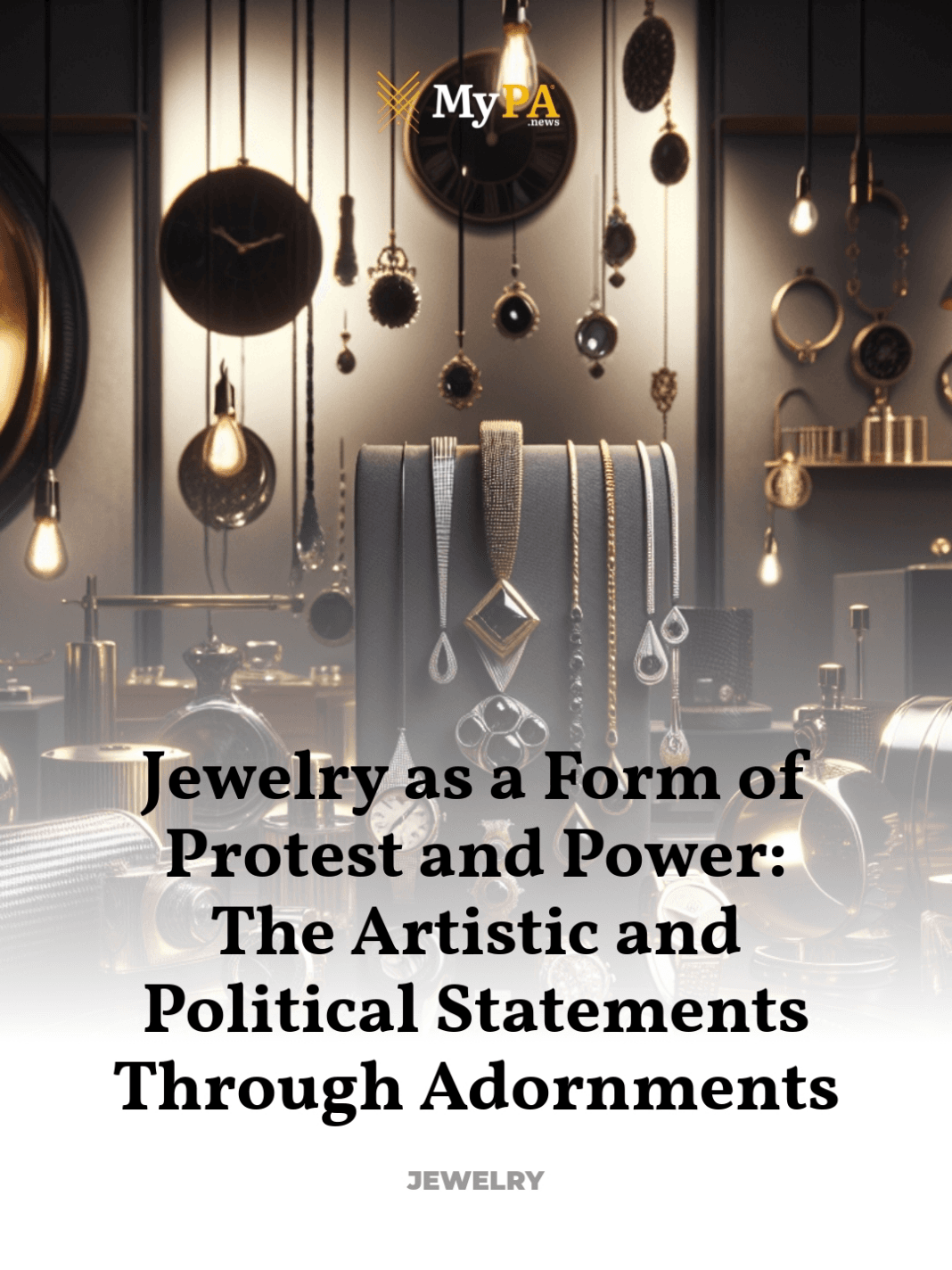Examining how adornments have been used throughout history to make political and social statements
Jewelry, often seen merely as a symbol of luxury and aesthetics, holds a deeper, more potent role in society as a medium of protest and power. Throughout history, from the crowns of ancient monarchs to the suffragette pendants of the early 20th century, jewelry has served as a powerful tool for political and social statements. This article delves into the intricate relationship between adornments and their roles in expressing resistance, asserting identity, and influencing social change.
- Ancient Origins: Symbols of Divine and Royal Authority
- Medieval and Renaissance: Sumptuary Laws and Social Structures
- Modern Movements: Emblems of Change and Challenge
- Contemporary Statements: Jewelry in Today’s Activism
- Concluding Reflections: The Enduring Power of Jewelry
Ancient Origins: Symbols of Divine and Royal Authority
The use of jewelry as a symbol of socio-political status and divine authority can be traced back to ancient civilizations. In Ancient Egypt, jewelry was not only an adornment but also a form of amulet with sacred powers. Pharaohs and high-ranking officials wore elaborate pieces symbolizing their divine authority and responsibility to maintain order and harmony.
- Pharaohs’ Headdresses: The crowns of Egypt, such as the Deshret and Hedjet, symbolized the ruler’s control over different parts of the country.
- Priestly Breastplates: These were not only ornamental but also imbued with spiritual significance, each stone representing a different aspect of spiritual wisdom and power.
In ancient Mesopotamia, rulers adorned themselves with jewelry to signify their wealth and status, often to assert their dominance over conquered peoples. Similarly, in the Roman Empire, rings were worn by the elite to signify their social status, and laws restricted the wearing of certain types of jewelry to the upper echelons of society.
Medieval and Renaissance: Sumptuary Laws and Social Structures
During the Medieval and Renaissance periods, jewelry continued to play a critical role in social and political frameworks. Sumptuary laws, which regulated the consumption of luxury goods including jewelry, were widespread across Europe. These laws were not merely about controlling extravagance but were also tools used by the powerful to reinforce social hierarchies and moral codes.
- Sumptuary Laws: In medieval England, these laws dictated that only royalty could wear jewels of gold, purple silk, or sable furs, thus reinforcing the social stratification.
- Renaissance Influence: In Renaissance Italy, the affluent displayed their wealth and political alliances through ostentatious jewelry, often embedded with portraits or emblems of their allies and patrons.
Jewelry also served as a form of personal and political statements. For instance, portrait miniatures in lockets or The Evolution of Engagement Rings: From Royalty to Modern Loverings, popular in Tudor England, were often exchanged as tokens of loyalty or affection, subtly conveying alliances and social bonds.
Modern Movements: Emblems of Change and Challenge
In the modern era, jewelry has been wielded explicitly as a tool of protest and empowerment. The suffragette movement in early 20th-century Britain is a prime example, where jewelry was used symbolically to promote the cause of women’s rights.
- Suffragette Jewelry: Pieces in green, white, and violet (symbolizing Give Women Votes) were worn to signal allegiance to the movement subtly.
- Anti-Slavery Tokens: In the 18th and 19th centuries, abolitionists in both Britain and America wore jewelry featuring the image of a kneeling slave, accompanied by the motto “Am I Not a Man and a Brother?” or “Am I Not a Woman and a Sister?”
During the civil rights movement in the United States, African American men and women wore African-themed jewelry as symbols of pride and resistance against systemic racism. This trend continues today with jewelry that carries political slogans or symbols of various movements.
Contemporary Statements: Jewelry in Today’s Activism
In contemporary society, jewelry remains a potent tool for personal expression and political activism. Designers and wearers often use jewelry to make statements on everything from gender identity to environmental issues.
- Eco-Conscious Adornments: Many modern jewelers use sustainably sourced materials or upcycled elements to create pieces that highlight environmental concerns.
- Pride and Identity: Jewelry items featuring rainbow motifs or transgender pride symbols serve as both personal expressions of identity and broader calls for equality and acceptance.
Moreover, in the age of social media, jewelry with a message can quickly become viral, spreading awareness and prompting discourse on global issues.
Concluding Reflections: The Enduring Power of Jewelry
The historical and contemporary examples illustrate that jewelry is far more than decorative art. It is a powerful medium through which individuals and groups express their beliefs, challenge societal norms, and effect change. As we continue to navigate complex social and political landscapes, jewelry will undoubtedly remain a key player in the arena of protest and empowerment.
For further exploration of the historical significance of jewelry in social movements, consider visiting authoritative sources such as the Metropolitan Museum of Art’s Jewelry Collection.



